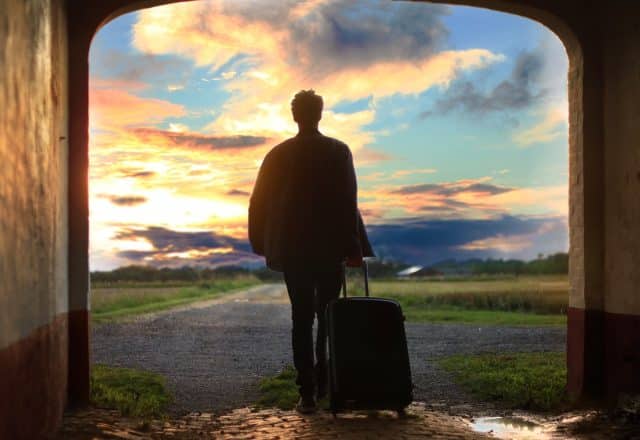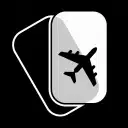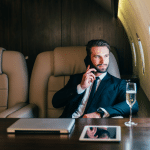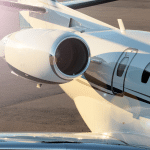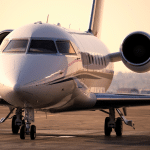Fear of Flying Statistics, Trends & Facts (2022 Data)
Fear of Flying Statistics
Most of us have either experienced it ourselves or know someone who has, the crippling fear of flying: The sweaty palms, nausea, and shortness of breath that descends upon you as you contemplate being stuck in the air, a situation in which you have absolutely no control.
Private jet charters have been known to reduce the fear of flying because people feel more in control of their surroundings and they can get one-to-one attention from the flight crew should they start to panic.
What is a fear of flying called?
The technical name for fear of flying is aviophobia, and it is more common than you would expect. Indeed, it adversely affects millions of people, dramatically limiting their careers and personal lives.
In this short guide, we have tried to untangle this phenomenon, providing some statistics and advice on how to overcome the fear of flying.
If you personally struggle with it or know someone that might need help in this area, this guide is for you.
In This Guide:
What is Aviophobia?
How many people have a fear of flying?
How Safe is Flying?
How to Overcome the Fear of Flying?
What are exposure and cognitive-behavioral therapy?
Tips and Advice on How to Deal with Fear of Flying
What is Aviophobia?
Fear of flying or aviophobia is officially classified as an anxiety disorder. This disorder is sometimes called flight phobia, aerophobia, or flight anxiety. It is difficult to strictly define the term since it encompasses the fear someone experiences while flying, as well as the anxiety they feel in anticipation of an upcoming flight.
How many people have a fear of flying?
- Between 33% and 40% of all people experience some form of anxiety when it comes to flying.
- 60% of sufferers experience generalized anxiety during the flight (and leading up to it) that they can easily manage on their own.
- Between 2.5% and 5% of the population have crippling anxiety, a genuine fear of flying that is classified as a clinical phobia.
- People report their first fear of flying “attack” at the age of 27 on average.
Fear of flying statistics show that this anxiety disorder is quite prevalent among the population and can negatively affect a person’s quality of life. This disorder is often manifest in adults, with an average reported first fear of flying “attack” at the age of 27. Being scared of flying is not something we can just write off as unimportant and statistically irrelevant. On average, a flight full of people leaving New York or North Carolina, for example, is bound to have several people on it that might experience aviophobia at different levels of intensity. Aviophobia facts are clear on that much.
How Safe is Flying?
Once we have established the clinical diagnosis and the causes of fear, it is time to see if these fears are irrational or based on something real. It has often been said, “Flying is still the safest way to travel.” However, most media outlets provide detailed and lengthy coverage of any airline crashes and casualties whenever they happen. This happens with enough regularity that we get the feeling that airplanes crash quite often.
- There was a 1 in 3.37 billion chance of dying in a commercial airline plane crash between 2012-2016.
- 98.6% of crashes do not result in a fatality.
- Of the 140 plane accidents during 2012-2016, only two involved fatalities (1.4%).
- Commercial plane incidents cause death only once in 20 million flights.
It is easy to dismiss aviophobia as an anxiety disorder of the wimpy and weak-minded. But our media-saturated world proves otherwise. News and Getty images, like the recent coverage of Kobe Bryant and eight other people in a helicopter crash, or coverage of tragic events like the 9/11 terrorist attacks are a constant reminder (and trigger) for those who experience anxiety about flying. The airline industry struggles to fight the irrational panic and paranoia connected with plane crash reports and incidents.
Regardless of the fact that plane incidents might cause death only once in 20 million flights, the perception of danger is something that sticks with people. Also, bear in mind that every media company (like CNN, NBC, BBC, Getty Images) profits from that coverage, and might not have your best interest in mind when it comes to providing facts.
Not only is flying the safest mode of transportation, but its safety has been constantly improving over the last few decades. The Federal Aviation Administration reports statistics of the likelihood of a plane crash on a commercial flight. In cooperation with world-class statistician Arnold Barnett from MIT, they have published statistics showing that:
1968 and 1977: 1 death per 350,000 commercial boardings.
1978 and 1987: 1 death per 750,000 boardings.
1988 and 1997: 1 death per 1.3 million boardings.
1998 and 2007: 1 death per 2.7 million boardings.
2008 and 2017: 1 death per 7.9 million boardings.
The airline industry has improved the safety of airline passengers by more than 20 times (twenty-fold) in the last five decades.
At the same time, the safety of other modes of transportation has improved as well, but not nearly as much. The rate of deaths in motor vehicles has been on a constant decline since the 1970s. However, in 2018 alone, more than 36,000 highway deaths were recorded in the U S. Most of us, at one point or another, will be involved in a traffic accident in a motor vehicle, regardless of the outcome. The same cannot be said for air travel.
How to Overcome the Fear of Flying?
What good are all those flying data and stats to those who feel such strong anxiety about stepping inside a plane? Whether those fears and phobias have a base in reality and statistics is not important. Fear and anxiety are real to those people who experience them. Is there something that you can do or some kind of pill you can take to make it all go away?
The answer is a bit more complex, but yes, aviophobia is something that can be managed and cured. We would like to take this moment to mention the dangers of self-medicating or using alcohol or other drugs to “take the edge off” before flights. Those who experience fear of flying might actually make the situation worse by choosing to get drunk before or during a flight. And taking medication might have adverse side effects.
Having to take a long U S coast-to-coast flight from New York to LA is a nightmare for those who have a fear of flying, so downing a few whiskey shots might seem like a great idea. Yet, the reality is that by doing this, you are not treating the causes of your anxiety (and getting better). Rather, you are just dulling your senses and altering your reality. Anxiety medication can help alleviate some of the fear and anxiety, yet it plays no role in improving the long-term condition of those scared of flying.
The most common tool used by therapists and psychologists to treat different types of phobias is exposure therapy. Aviophobia is no different. Exposure therapy, combined with cognitive-behavioral therapy, is still the best way to manage and overcome anxiety about flying.
What are exposure and cognitive-behavioral therapy?
Exposure therapy is a technique used in behavioral therapy to treat anxiety disorders. It involves exposing the subject to the source anxiety in a safe environment, under the clear perception that he/she will not actually experience any harm. When people who have a fear of flying are regularly exposed to stimuli that trigger anxiety and fear (and they have to simply face the fear) their brain slowly changes its response to these stimuli.
Application of exposure therapy to a variety of anxiety disorders and phobias has been a success. But it requires highly-trained professionals to administer it, as well as plenty of time for the therapy to work. There are no quick solutions to the problem of fear and anxiety on a plane.
When it comes to cognitive-behavioral therapy and how it relates to fear of flying, the story is quite similar. While people find that they do not have a say in whether they will experience fear and anxiety during a flight on a plane, with the help of cognitive-behavioral therapy they might find a way to retrain their response to those triggers (and the oncoming anxiety and fear).
This is what cognitive-behavioral therapy does. It trains our brain to respond to certain stimuli, environmental factors, and triggers. A patient with fear of flying is put in a series of scenarios that resemble the factors and environments that activate his/her phobia, and then is introduced to techniques that can help them associate those triggers and factors to more pleasant and manageable experiences. It is not a linear process, and the progress between subjects may vary a lot, but most of the subjects show great improvement.
Tips and Advice on How to Deal with Fear of Flying
While exposure and cognitive-behavioral therapy are quite effective, they might not be an option for many people. Whether it is the lack of time, funds, medical coverage, or availability of trained therapists, it might be difficult for everyone to take the medically recommended route to deal with anxiety on a plane. What are some other things that might help in those situations?
The airline industry puts a lot of effort into training its personnel to deal with situations that might arise on the plane. Flight attendants are well aware of aviophobia. They have already dealt with people who experience fear and anxiety on a plane. If you are one of those, it might not be a bad idea to inform a flight attendant, once you board the plane, that you have trouble flying and experience anxiety. The flight crew will reassure you of the safety of the flight, as well as pay close attention to your mental state during the flight, or provide you with some breathing exercises that might help.
In addition to that, finding a distraction during stressful periods on a flight (such as turbulence, takeoff, and landing) could prove to be beneficial. If you are focused on reading your book, magazine, watching a movie, listening to music, or playing a video game, you are less likely to pay attention to the triggers that might make your anxiety worse. The goal is to feel like you are somewhere else, rather than on a plane.
We have already mentioned that it is a bad idea to self-medicate before or on the flight. If your anxiety is quite mild, and a drink or two on a flight might get you more relaxed, or perhaps help you sleep on a long flight, go ahead. Yet, if you find it almost impossible to step a foot on a plane without taking medication or being intoxicated, it is best to avoid it altogether due to potential side effects and your safety on the flight.
Conclusion
Aviophobia is very real, and it adversely affects a large percentage of the population. More than one-third of all people experience some form of fear or anxiety when it comes to flying. Between 2.5% and 5% of those are considered clinical cases (this means they cannot go without specialized therapy and/or medication). While it is based on irrational triggers, aviophobia is still a real nuisance for many and negatively impacts their personal lives and careers.
The statistics are clear: commercial flying is by far the safest mode of transportation a person can use. Plane safety has been on a constant incline since the 1970s, and the likelihood of a fatal incident on a commercial plane is now at odds of 1 to 8,000,000. The studies and statistics of the last decade are even more impressive, showing a statistical trend of up to 1 in 3.37 billion chance for a fatality.
However, it is important not to dismiss the anxiety and fear that a person might experience when flying. With plenty of treatment options available to make the condition manageable, there is hope for everyone. We do hope that you found this guide useful and that your aviophobia will one day be behind you.
Reference URLs
https://www.ncbi.nlm.nih.gov/pubmed/26186430
https://www.medicalnewstoday.com/articles/320367.php#6
https://time.com/5330978/fear-of-flying-aviophobia/
anxietypanichealth.com/2008/07/17/aviophobia-understanding-the-fear-of-flying/
http://www.nbcnews.com/id/31071455/ns/travel-travel_tips/t/whats-behind-fear-flying/
Empty Leg Flights
- Light
- Citation Bravo
SUA (STUART)
SUA Airport
TEB (TETERBORO)
TEB Airport
- Mid
- Hawker 900XP
BCT (BOCA RATON)
BCT Airport
FRG (FARMINGDALE)
FRG Airport
- Super-Mid
- Gulfstream G200
HPN (WHITE PLAINS)
HPN Airport
PBI (WEST PALM BEACH)
PBI Airport
Are you ready to book your New York and Seattle charter flight yet?
Our friendly, expert air charter agents are here to answer questions or start your quote today. Don`t wait, call now and we'll get you on your way to your destination!
Call 888-593-9066